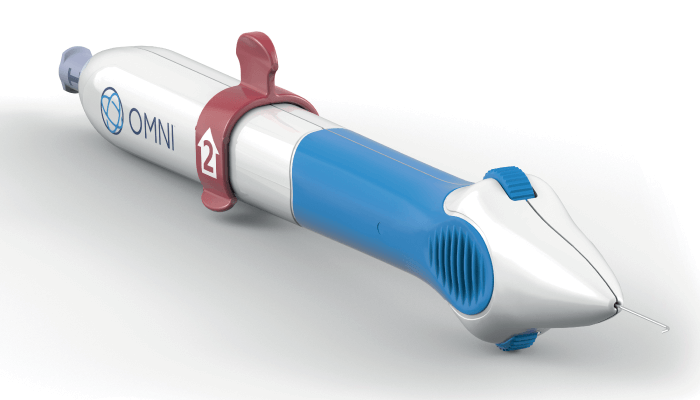
Addressing the conventional outflow pathway first
Primary open angle glaucoma (POAG) is the most common form of glaucoma globally. It is estimated that about 2 percent of people over the age of 40 have the condition – rising to almost 10 percent in patients over 75. But the surgical management of glaucoma continues to prove challenging despite tremendous recent innovation, particularly within the minimally invasive surgical space, in part due to uncertainty as to where aqueous outflow resistance occurs in the conventional outflow pathway. Studies have found that 50 to 75 percent of resistance may be in the trabecular meshwork, and up to 50 percent in Schlemm’s canal and the distal collector channels (1, 2, 3). But identifying where blockage or resistance occurs within the conventional outflow pathway can be hard. Targeting the trabecular meshwork alone or isolating a single point may not be enough to lower IOP. The possibility of resistance occurring at any point suggests that a surgical option addressing all three points of potential resistance – the trabecular meshwork, Schlemm’s canal, and the distal collector channels – may offer the best chance of success.
A new MIGS solution
The OMNI Surgical System – by Sight Sciences. The OMNI Surgical System is a relatively new surgical device and the only one that combines two ab interno, minimally invasive treatments in a single procedure: canaloplasty and trabeculotomy. This new technology allows surgeons to address outflow resistance wherever it may be, both proximally (trabecular meshwork and inner wall of Schlemm’s canal), and distally (Schlemm’s canal and the collector channels).
A versatile procedure
Although OMNI itself was introduced in 2018, from a procedural standpoint, there is a rich and deep evidence base for both canaloplasty and trabeculotomy. OMNI is an implant-free procedure that treats the conventional outflow pathway but is differentiated in that it addresses resistance throughout the entire conventional outflow pathway. The OMNI Surgical System is one of the only MIGS devices that can be performed in conjunction with cataract surgery or as a standalone procedure to significantly reduce IOP from baseline levels.
Efficacy in stand-alone and combined procedures
In a study of 24 eyes with mild to moderate POAG and preop medicated IOP>18 mmHg, the OMNI in combination with cataract surgery resulted in a 31 percent (6.8 mmHg) reduction in IOP from medicated baseline (4), with one in three patients being medication-free at 12 months. Similar efficacy was reported when the OMNI was used as a standalone procedure (5). In a study looking at 38 mild to moderate eyes with open angle glaucoma, 96 percent achieved IOP reduction of 20 percent (9.9 mmHg), with 63 percent of patients medication-free at 12 months (6).
In conclusion
True to the MIGS paradigm, the procedure is accomplished with minimal tissue trauma, sparing sclera and conjunctiva; recovery is rapid, there is demonstrable efficacy, and a very good safety profile. In contrast to microstent procedures, there is no implant that could have unintended long-term consequences. It is already making waves in the MIGS space, with pioneering surgeon Ike Ahmed (Prism Eye Insitute, Trillium Health Partners, University of Toronto, Canada) already a fan. “The OMNI Surgical System is a sophisticated, minimally invasive delivery system. I appreciate the fact that the two implant-free procedures it performs — ab interno canaloplasty and a titratable trabeculotomy — can target all three potential points of resistance in the conventional outflow pathway, especially because we do not know the cause of the outflow resistance.”
So what are you waiting for?
When efficacy matters, the only choice is OMNI.

IMPORTANT PRODUCT INFORMATION:
INDICATIONS FOR USE: The OMNI™ Surgical System is indicated for the catheterization and transluminal viscodilation of Schlemm’s canal and the cutting of trabecular meshwork to reduce intraocular pressure in adult patients with open-angle glaucoma. For important safety information including contraindications, warnings, precautions and adverse events, please visit omnisurgical.com.
References
- WM Grant, “Experimental aqueous perfusion in enucleated human eyes,” Arch Ophthalmol, 69, 783 (1963). PMID: 13949877.
- R Rosenquist et al., “Outflow resistance of enucleated human eyes at two different perfusion pressures and different extents of trabeculotomy,” Curr Eye Res, 8, 1233 (1989). PMID: 2627793.
- SA Battista et al., “Reduction of the available area for aqueous humor outflow and increase in meshwork herniations into collector channels following acute IOP elevation in bovine eyes,” Invest Ophthalmol Vis Sci, 49, 5346 (2008). PMID: 18515571.
- L Hirsch et al., “Canaloplasty and trabeculotomy ab interno with the OMNI System combined with cataract surgery in open-angle glaucoma: 12-month outcomes from the ROMEO Study,” J Cataract Refract Surg [Online ahead of print] (2021). PMID; 33315733.
- Vold SD, Williamson BK, Hirsch L, Aminlari AE, Cho AS, Nelson C, Dickerson JE Jr. Canaloplasty and trabeculotomywith the OMNI system in pseudophakic patients with open-angle glaucoma: the ROMEO study. Ophthalmol Glaucoma.2021;4:173-181. doi: 10.1016/j.ogla.2020.10.001.
- K Klabe, CRSTEurope, “Standalone trabeculotomy and viscodilation of Schlemm Canal and collector channels in open-angle glaucoma,” (2021). Available at: https://bit.ly/3fdm208.
